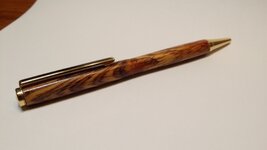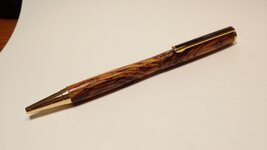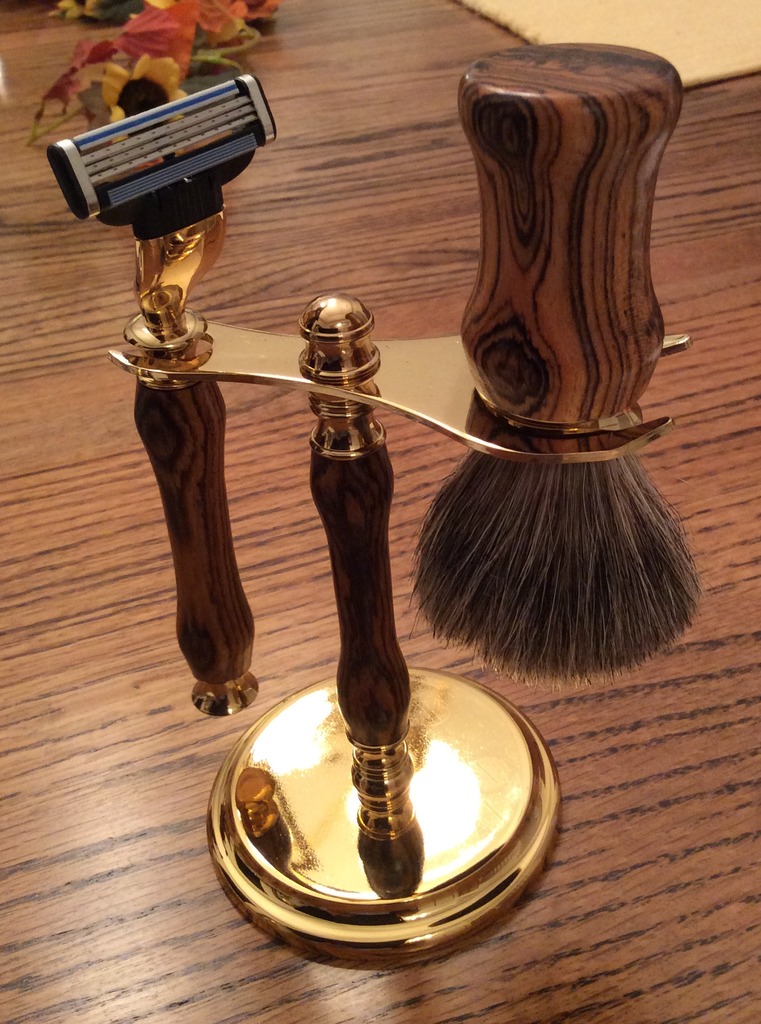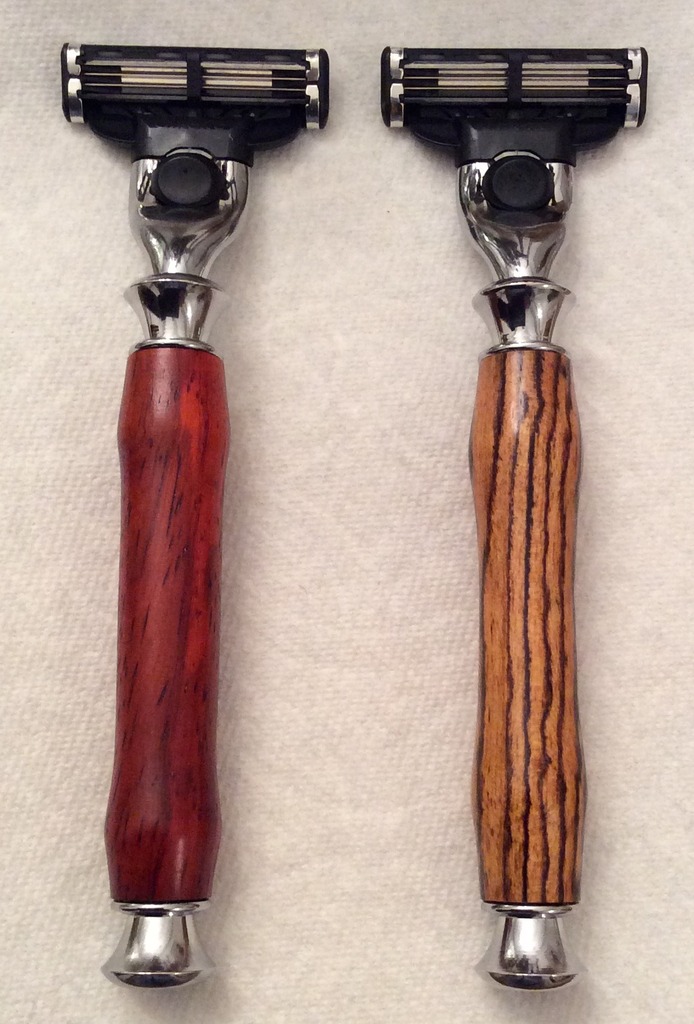kentonjm
Member
I am new to the whole pen making thing and am reasonably ok with the turning part but am really struggling with finishing. I was working on a pen yesterday to submit to the Turning Challenged Contest as I know I qualify and I just can not enter it as the fit and finish are just horrible. This is only my 8th pen and some of those came out perfect, I just dont know what I am doing right or wrong.
I have posted a couple of pics below and you can see that one of the issues is with the CA finish chipping on the edges. I guess this is due to the way the CA also goes onto the bushing and then snaps off when you separate the blank from the bushings.
I did previously try with some of those little silicon cones and the issue then was the CA getting on the ends. When I tried to sand the ends clean it also broke some of the CA off the edges.
FYI I have been trying either straight CA or the BLO/CA method. I find the BLO/CA easier and like the look but they issue I have then is that when I sand/polish with those little colored micromesh pads it seems I am sometimes going through the finish. The results are really inconsistent and I would love to know why sometimes its fine and others not.
As far as fit is concerned I believe I am turning to the bushings but then I sand and some more comes off and when you add the CA finish it does build up somewhat so how does one make sure you end up with the appropriate diameter to have a perfect fit with the kit parts.
I know I am new to this but would love to figure out a process that I can work on learning and get reliable results.
Thanks in advance for your help.
I have posted a couple of pics below and you can see that one of the issues is with the CA finish chipping on the edges. I guess this is due to the way the CA also goes onto the bushing and then snaps off when you separate the blank from the bushings.
I did previously try with some of those little silicon cones and the issue then was the CA getting on the ends. When I tried to sand the ends clean it also broke some of the CA off the edges.
FYI I have been trying either straight CA or the BLO/CA method. I find the BLO/CA easier and like the look but they issue I have then is that when I sand/polish with those little colored micromesh pads it seems I am sometimes going through the finish. The results are really inconsistent and I would love to know why sometimes its fine and others not.
As far as fit is concerned I believe I am turning to the bushings but then I sand and some more comes off and when you add the CA finish it does build up somewhat so how does one make sure you end up with the appropriate diameter to have a perfect fit with the kit parts.
I know I am new to this but would love to figure out a process that I can work on learning and get reliable results.
Thanks in advance for your help.




